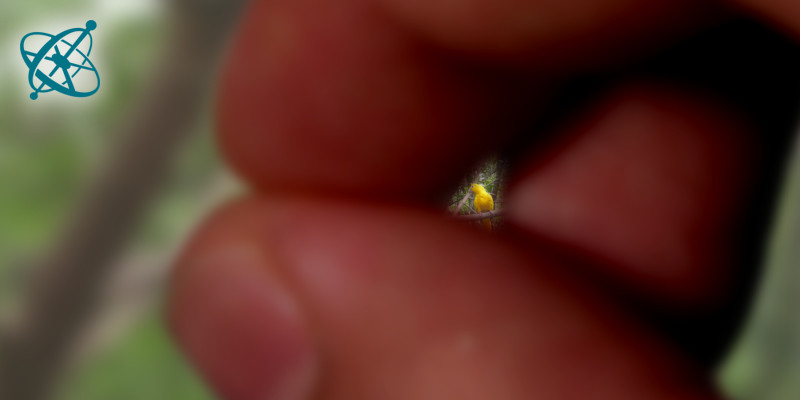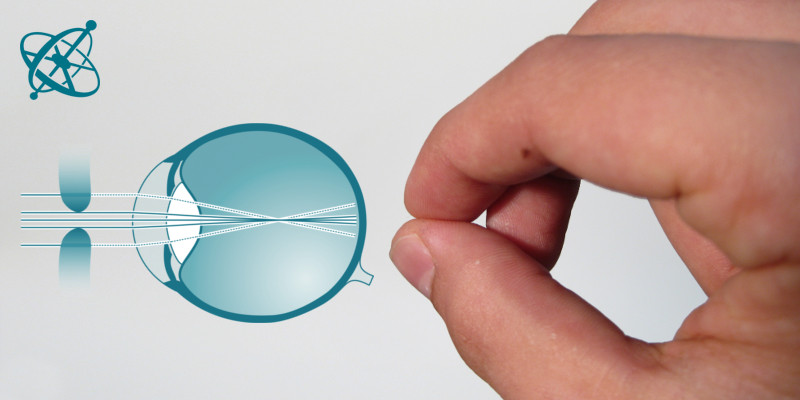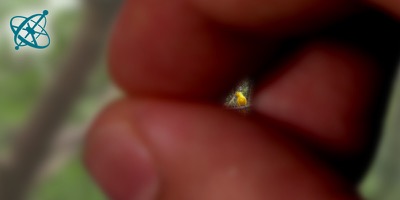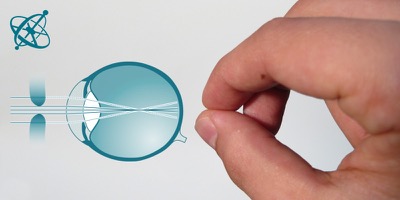 www.sciensation.org | Ciênsação hands-on experiments are published as Open Educational resources under a Creative Commons Attribution-ShareAlike 4.0 International License.
www.sciensation.org | Ciênsação hands-on experiments are published as Open Educational resources under a Creative Commons Attribution-ShareAlike 4.0 International License.
Why does looking through a pinhole improve vision?

The aperture blocks light that would blur the image.
The world seen through a pinhole
Pinhole glasses once have been hailed as cheap alternative to improve vision. While they are clearly no replacement to prescription glasses due to the smaller field of view, loss of brightness and other irritating effects, it is interesting to discuss why looking through a small aperture improves vision.
Understanding the effect of an aperture on vision and the depth of field.
Fingers
Ask students wearing eyeglasses to borrow their glasses to students that don't use them, or let students with different strength of eyeglasses swap them. The goal is that everyone has a blurred vision for this experiment.
Hold you thumb and two fingers together so that they form a small triangular aperture.
1. Why do you see things sharper through the small aperture?
2. Why is the image not upside down as in the camera obscura?
What does it mean that an image is 'blurred'?
› Light from an object point is not focused to one point in the image but spread over an area. Since these areas overlap, it becomes harder or even impossible to resolve smaller details.
What does an aperture do in an optical system?
› It stops light.
What light does the finger aperture stop?
› The aperture stops light that is not traveling close to the optical axis.
A blurred vision (usually) comes from light rays that our eye's lens deflects either too strong or not strong enough to form a sharp image on the retina. The finger aperture only allows a small bundle of light rays near the optical axis onto the retina, and stops rays that would be refracted 'incorrectly' from overlaying with the image we want to see. The 'price' for this is a small field of view and dark image.
In photography, apertures are used to control the blur of objects that are before or behind the object in focus, the so-called depth of field.
Images seen in this experiment are actually upside down on the retina, and the aperture has no effect on this. Since we always see the image flipped, our brain corrects this automatically.

